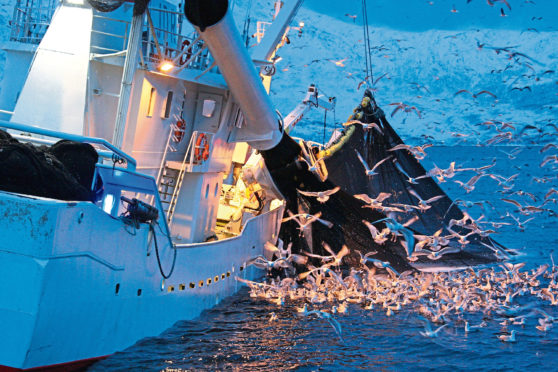Shetland fishing boats are being asked to collect samples of herring caught around the islands during the winter and spring so they can be genetically identified.
Scientists at NAFC Marine Centre UHI, in Scalloway, are baffled by the presence of “winter herring” and want to find out more about them.
There are several populations in the north-east Atlantic. Around Shetland, autumn-spawning herring are present and support a valuable commercial fishery.
However, there have also been observations in Shetland waters of other herring, which instead undergo maturation in the winter months to spawn early in the year.
NAFC fisheries scientist Katie Brigden, who is leading the new research project, said: “While we are aware of previous fishing for ‘winter herring’, there is little documented information available.
“The presence of these fish is of interest to science and industry – raising the question of a stock distribution which is potentially unknown and unaccounted for. There is a need to gather more information to confirm which population these herring belong to.”
The scientists are asking all fishing vessels in Shetland waters to look out for, and retain, any herring caught between now and April so they can be biologically sampled and genetically identified.
Meanwhile, two fish that were tagged by NAFC scientists more than three years ago have been recaptured and are helping to boost knowledge of their species’ growth and movement patterns
The first fish was a thornback ray, caught by the Lerwick-registered Arcturus while she was fishing east of Unst.
It had been tagged on board NAFC’s research vessel Atlantia II in July 2017 and released near Fetlar, about 15 miles from where the Arcturus recaptured it. The second tagged fish was a monkfish caught by another Lerwick boat, the new Ocean Challenge, north-west of Muckle Flugga.
Coincidently, crew member Arthur Johnson was skipper of the Atlantia II when the fish was tagged west of Scalloway in June 2016.
Since it was tagged the monkfish had moved more than 62 miles to the north and almost doubled in size.
NAFC fisheries research assistant Connor Wood said: “With tagging you record the size of individual fish and when and where they are released. If they are caught again you can work out how much they’ve grown and how far they’ve travelled.
“This data can be used to better understand the overall growth and movement patterns of commercially important stocks around Shetland.”
Researchers tagged 13,745 different species of fish between 2013-2017 and 1,049 have been recaptured.










